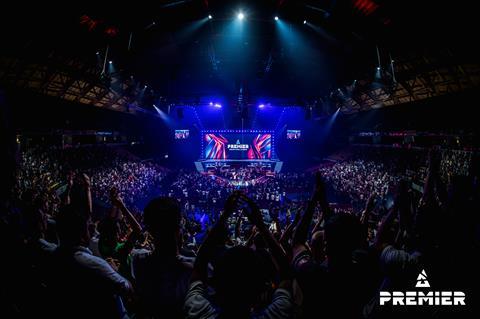Pandemic postponements opened up an opportunity for esports competition

Worries over ageing audiences and falling TV viewership has had many sports turning their attention to social media and digital platforms in recent years.
However, for esports competition Blast Premier, it is something of a mirror image. A hit across the likes of Twitch, Twitter, and more, the competition has been growing in popularity with a young and engaged audience - as evidenced by DAZN’s recent rights acquisition for over 100 territories, including the UK, US, and Japan.
This leaves it in the interesting position of wanting to grow in the opposite direction to many traditional sports, according to its VP of distribution and programming, Alexander Lewin, with its next aim to gain further linear exposure and service an older audience while continuing its online success.
“The difference is that when they’re young, they come to us, whereas when they’re a little bit older, we go to them,” Lewin explained to Broadcast Sport on Blast’s target audiences.

“When it comes to older fans, there is a learning experience. Some of them, because [Counter Strike is] 20 years old, and they played as kids. They grew up, they had families, they’ve turned to other things, and suddenly, if we’re available on a sports channel that they might know, or a traditional public broadcaster, or a commercial channel, they see us with some delight and they start watching us.
“Then there is a target audience which is very attractive to us, who don’t yet know that they are fans of Blast because they haven’t seen it. We need to team up with broadcasters who have reach with the target audience that is not in our universe yet. We make it available by bringing Blast to them.”
Opportunities to reach this untapped audience first came up during the pandemic, when traditional broadcasters found themselves stuck without sport due to the many postponements. Lewin revealed: “Buyers that previously were sitting on the fence were suddenly saying, ‘Wow, I’ll have a look’. Once they had a look they went for it, and so we concluded quite a number of new deals.” The competition now has almost 50 broadcast partners around the world.

However, while Blast is looking to more traditional broadcasters for its growth, Lewin doesn’t see esports ever leaving online platforms behind, with different distribution options servicing different cohorts: “Online, whether it’s Twitch or whether it’s YouTube etc., that’s the original home of esports. This the original home of gaming. This is where the community is. Those platforms provide an interactive experience for this crowd. So, it doesn’t matter whether people watch on YouTube or Twitch, but they engage with the chat, and the overall conversation took place on Twitter. That’s an ecosystem which is working very well.
“On TV and OTT, the target audience is slightly older. The experience that they’re looking for is different. It’s a lean back experience, they want to be entertained. So, the factors that we are looking to provide and that matter for that audience are things that are the hallmark of the Blast brand, which is superb production quality, high entertainment value and innovative technology.”

It is the younger committed audience that can then introduce their elders to the sport, with a linear option key to keeping older family members interested after the initial introduction: “What we do know is that, let’s take Denmark, for example, where we have TV2 to as linear licensee, is that a younger crowd would watch with their parents on linear. So, if it’s transgenerational, then the tendency is to be on the platform that is traditionally associated with older age groups.”
Lewin doesn’t believe that younger groups will move to linear as they grow older: “My guess would be that they stay in the environment in which they grew up with us. Of course, they will, as they grow older switch to linear/OTT for other things. They might be watching Netflix, Apple, etc…but if the question is, ‘are people ever outgrowing YouTube or Twitter or Twitch?’ I don’t think so.”
For this reason, Lewin explained that Blast isn’t, “looking to replicate the online experience for linear or OTT because whoever wants the online experience, usually knows that it exists, knows where to find it and goes there.”

Indeed, when it comes to linear, Blast’s uses features such as a new analysis map, that has similarities with analysis and punditry in more traditional sports, “as a feature to explain certain strategies and the beauty of the in-game excitement that is, perhaps, not fully available to an audience that is a little bit older and didn’t grow up with a game as much as the people who played actively and then watch it online did. So, we’re thinking more about how we entertain and educate that audience when we look for partners in the linear space.”
Going forward, Blast has a number of avenues it is looking at, including creating a product that is suitable for advertising-funded OTTs, and Lewin advises viewers to “stay tuned” for a behind-the-scenes documentary to follow up its post-pandemic YouTube release, Ready-Up. The future looks bright for Blast and esports in general, with its recent Lisbon Spring Finals event receiving its second-highest peak audience ever at 760,000, translating that into linear success and adding older audiences will be its next challenge.





No comments yet